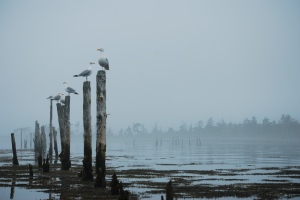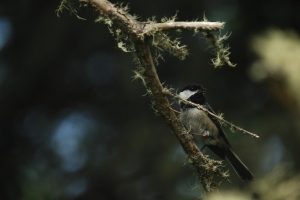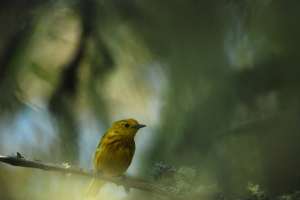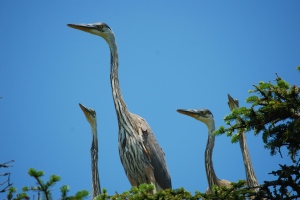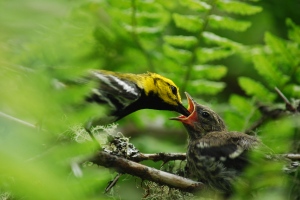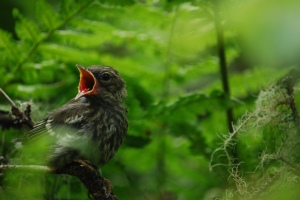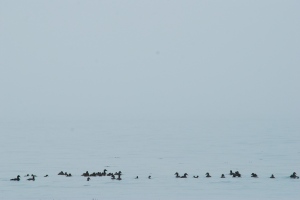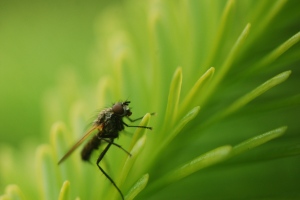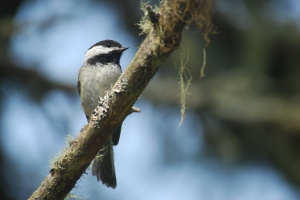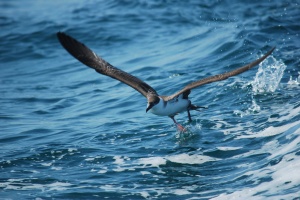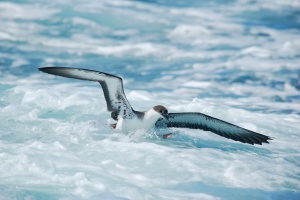Herring gulls perch on old pilings in the channel between Kent and Hay Island. The distant poles used to compose a herring weir, but it was abandoned long ago and they now provide a trail through the fog for adventurous but lost students.
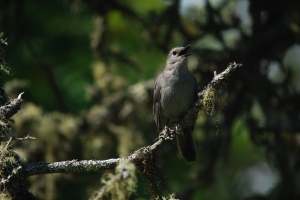 A Gray Catbird sings one song or another. Catbirds are not named for their striking resemblance to cats, but instead, I think, for the striking resemblance their mewing call has to the meow of their feline foe. Catbirds are also in the family Mimidae, which is comprised of vocal mimics. Birds in this family, such as catbirds and mockingbirds, mimic the songs of other species and develop extensive, and confusing, vocal repertoires.
A Gray Catbird sings one song or another. Catbirds are not named for their striking resemblance to cats, but instead, I think, for the striking resemblance their mewing call has to the meow of their feline foe. Catbirds are also in the family Mimidae, which is comprised of vocal mimics. Birds in this family, such as catbirds and mockingbirds, mimic the songs of other species and develop extensive, and confusing, vocal repertoires.
Greater Shearwaters. These birds are part of the order Procellariiformes, which is distinguished by the nasal salt glands on top of the birds’ bills. Colloquially dubbed tube noses, Procellariiformes drink salt water at sea and then excrete excess salt through their glands. To get these two pictures, we chummed with herring on a whale watching trip, which caused every gull in the Bay of Fundy, along with a couple shearwaters, to pay us a visit.

